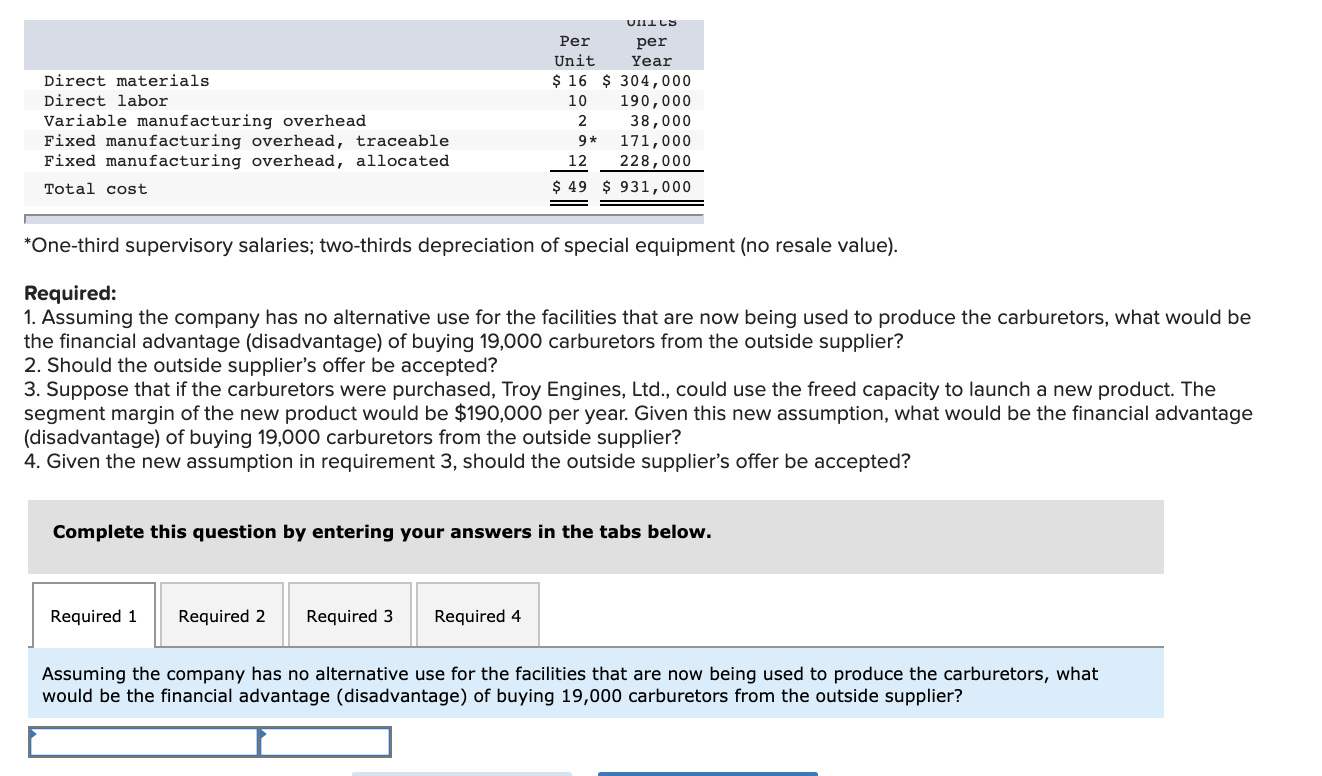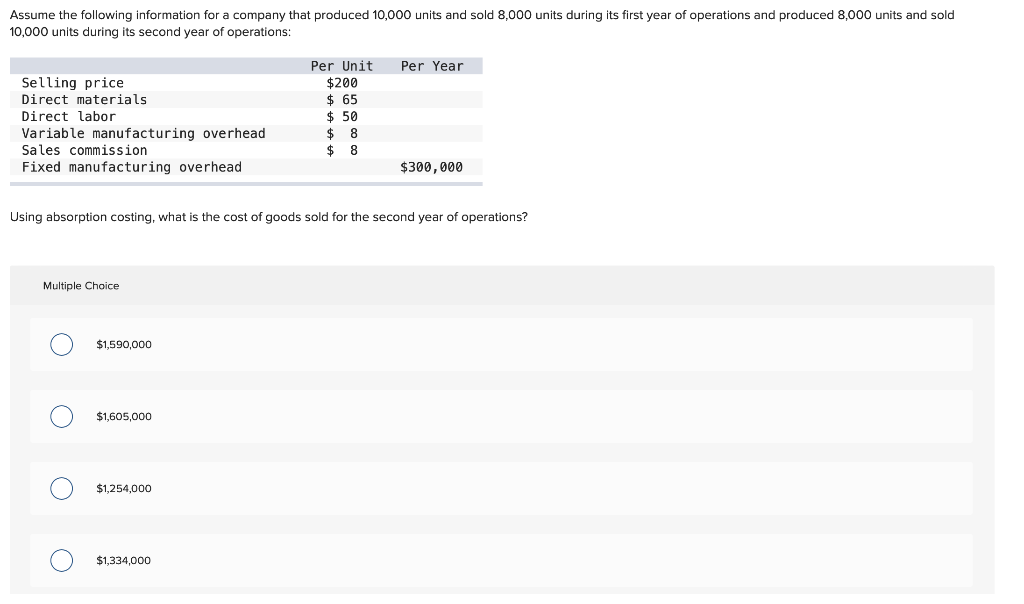Direct Cost, Variable Cost, Fixed Cost, Indirect Cost

For example, let’s say that Company ABC has a lease of $10,000 a month on its production facility and produces 1,000 mugs per month. If it produces 10,000 mugs a month, the fixed cost of the lease goes down to the tune of $1 per mug. In this case, suppose Company ABC has a fixed cost of $10,000 per month to rent the machine it uses to produce mugs. If the company does not produce any mugs for the month, it still needs to pay $10,000 to rent the machine. If any carriage costs are incurred on purchases of raw materials, such costs should be added to the value of the materials bought in the year.
Advanced Concepts in Variable Costing
Variable costs are those expenses that change in proportion to the volume of goods a company produces or the number of services it provides. These costs fluctuate based on the level of production or output – increasing when production increases and decreasing when production declines. Unlike fixed costs, which remain constant irrespective of output levels, variable costs are essential for determining the cost of goods sold, and they directly influence profit margins. If the cost object is a product being manufactured, it is likely that direct materials are a variable cost.
Can you provide examples of expenses that are considered fixed costs?
All such information is provided solely for convenience purposes only and all users thereof should be guided accordingly. For information pertaining to the registration status of 11 Financial, please contact the state securities regulators for those states in which 11 Financial maintains a registration filing. 11 Financial is a registered investment adviser located in Lufkin, Texas. 11 Financial may only transact business in those states in which it is registered, or qualifies for an exemption or exclusion from registration requirements. 11 Financial’s website is limited to the dissemination of general information pertaining to its advisory services, together with access to additional investment-related information, publications, and links. Finance Strategists has an advertising relationship with some of the companies included on this website.
What Are the Disadvantages of Variable Costing?
Economies of scale can be achieved when fixed costs are spread over a larger number of units produced, leading to a decrease in average fixed cost per unit. Although direct costs are typically variable costs, they can also include fixed costs. Rent for a factory, for example, could be tied directly to the production facility. However, companies can sometimes tie fixed costs to the units produced in a particular facility. A direct fixed cost is the second type of direct costs (the first being direct variable cost). A direct fixed cost is a cost which is directly related to the production process or service delivery but does not vary as per activity level.
- In conclusion, effectively managing variable costs through monitoring production levels and optimizing labor and materials usage can significantly improve a business’s profitability.
- Examples of variable costs include raw materials, direct labor wages, and manufacturing supplies.
- Understanding the difference between these costs can help a company ensure its fiscal solvency.
- The first example of an indirect variable cost we will take is of the ‘indirect material’.
- The total direct materials cost variance is also found by combining the direct materials price variance and the direct materials quantity variance.
These are just a few examples of variable costs that businesses must manage as they strive to deliver their products or services efficiently and cost-effectively. If a direct material is set up as an indirect material in an ERP system, it can cause inaccuracies in the cost of goods sold. This is because the cost of direct materials is a critical component of the cost of goods sold, which is the cost of the materials used to produce a product. While direct and indirect materials can be listed on a Bill of Materials (BOM), it is more common for BOMs to only list direct materials. In contrast, indirect materials are necessary for production but cannot be easily traced to a specific product or job. Considering these factors, cost accountants can determine whether a material qualifies as a direct material.

Average Variable Cost
The standard quantity is the expected amount of materials used at the actual production output. If there is no difference between the actual quantity used and the standard quantity, the outcome will be zero, and no variance exists. In this case, the actual price per unit of materials is $9.00, the standard price per unit of materials is $7.00, and the actual quantity used is 0.25 pounds. This is an unfavorable outcome because the actual price for materials was more than the standard price. As a result of this unfavorable outcome information, the company may consider using cheaper materials, changing suppliers, or increasing prices to cover costs.
Bench simplifies your small business accounting by combining intuitive software that automates the busywork with real, professional human support. Sunk costs – historical costs that will not make any difference in making a decision. Unlike relevant costs, they do not have an impact on the matter at hand. For the past 52 years, Harold Averkamp (CPA, MBA) hasworked as an accounting supervisor, manager, consultant, university instructor, and innovator in teaching accounting online. For the past 52 years, Harold Averkamp (CPA, MBA) has worked as an accounting supervisor, manager, consultant, university instructor, and innovator in teaching accounting online.
Variable costs, on the other hand, fluctuate with changes in production volume. Understanding the distinction between fixed and variable costs is crucial for making informed decisions within a business. A direct cost is a price that can be directly tied to the production of specific goods or services.
Even if management is willing to price the product as a loss leader, they still need to know how much money will be lost on each product. To achieve this, management needs an accounting system that can accurately assign and document the costs for each product. are direct materials fixed or variable These expenses change in proportion to the level of production or sales, making them an important factor in business decision-making. Understanding variable costs is crucial for businesses to efficiently allocate resources and maximize profitability.
Returning to the example of Dinosaur Vinyl’s order for Macs & Cheese’s stadium sign, Figure 4.7 shows the materials requisition form for Job MAC001. This form indicates the quantity and specific items to be put into the work in process. It also transfers the cost of those items to the work in process inventory and decreases the raw materials inventory by the same amount. The raw materials inventory department maintains a copy to document the change in inventory levels, and the accounting department maintains a copy to properly assign the costs to the particular job. Variable costs – vary in total in proportion to changes in activity. Examples include direct materials, direct labor, and sales commission based on sales.
